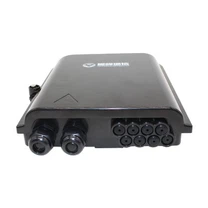
Yes, FTTH (Fiber-to-the-Home) deployments rely on fiber optic cables for transmitting data and providing high-speed internet access directly to residential homes or buildings. Fiber optic cables are the primary medium used in FTTH networks due to their ability to carry large amounts of data over long distances with minimal signal loss.
Fiber optic cables consist of thin strands of glass or plastic called optical fibers. These fibers are designed to transmit light signals, which carry data in the form of pulses of light. The core of an optical fiber is surrounded by a cladding layer that reflects the light back into the core, allowing it to propagate along the fiber.
In FTTH installations, fiber optic cables are typically deployed from the service provider's central office or data center to individual homes or buildings. The cables are installed either underground, through buried conduits, or overhead on utility poles. They are designed to withstand environmental factors such as temperature variations, moisture, and physical stress.
The fiber optic cables used in FTTH networks can support high-speed data transmission over long distances, enabling the delivery of high-bandwidth services such as internet, television, voice, and other digital services directly to end-users. These cables provide reliable and secure connectivity, with significantly higher data rates and lower latency compared to traditional copper-based connections like DSL or coaxial cables.
The use of fiber optic cables in FTTH deployments has revolutionized the telecommunications industry, enabling faster and more reliable internet connections and supporting the increasing demand for bandwidth-intensive applications and services in residential areas.






